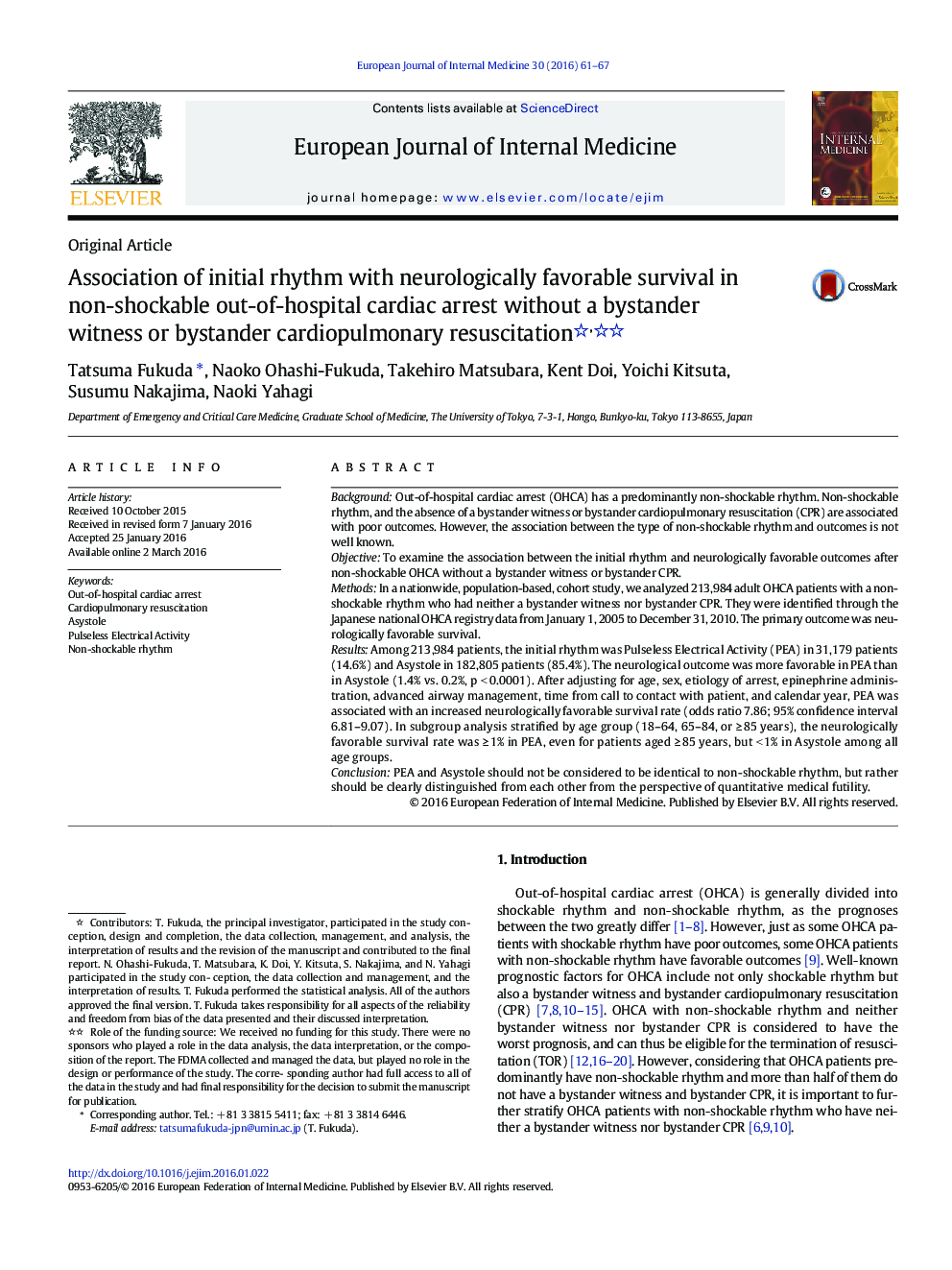| کد مقاله | کد نشریه | سال انتشار | مقاله انگلیسی | نسخه تمام متن |
|---|---|---|---|---|
| 3465905 | 1596536 | 2016 | 7 صفحه PDF | دانلود رایگان |
• We compared PEA with Asystole in cases without bystander witness or bystander CPR.
• Neurological outcome was more favorable in PEA than in Asystole.
• Neurologically favorable survival rate was ≥ 1% in PEA even for patients aged ≥ 85 years.
• Neurologically favorable survival rate was < 1% in Asystole among all age groups.
• PEA and Asystole should be distinguished from the perspective of medical futility.
BackgroundOut-of-hospital cardiac arrest (OHCA) has a predominantly non-shockable rhythm. Non-shockable rhythm, and the absence of a bystander witness or bystander cardiopulmonary resuscitation (CPR) are associated with poor outcomes. However, the association between the type of non-shockable rhythm and outcomes is not well known.ObjectiveTo examine the association between the initial rhythm and neurologically favorable outcomes after non-shockable OHCA without a bystander witness or bystander CPR.MethodsIn a nationwide, population-based, cohort study, we analyzed 213,984 adult OHCA patients with a non-shockable rhythm who had neither a bystander witness nor bystander CPR. They were identified through the Japanese national OHCA registry data from January 1, 2005 to December 31, 2010. The primary outcome was neurologically favorable survival.ResultsAmong 213,984 patients, the initial rhythm was Pulseless Electrical Activity (PEA) in 31,179 patients (14.6%) and Asystole in 182,805 patients (85.4%). The neurological outcome was more favorable in PEA than in Asystole (1.4% vs. 0.2%, p < 0.0001). After adjusting for age, sex, etiology of arrest, epinephrine administration, advanced airway management, time from call to contact with patient, and calendar year, PEA was associated with an increased neurologically favorable survival rate (odds ratio 7.86; 95% confidence interval 6.81–9.07). In subgroup analysis stratified by age group (18–64, 65–84, or ≥ 85 years), the neurologically favorable survival rate was ≥ 1% in PEA, even for patients aged ≥ 85 years, but < 1% in Asystole among all age groups.ConclusionPEA and Asystole should not be considered to be identical to non-shockable rhythm, but rather should be clearly distinguished from each other from the perspective of quantitative medical futility.
Journal: European Journal of Internal Medicine - Volume 30, May 2016, Pages 61–67
